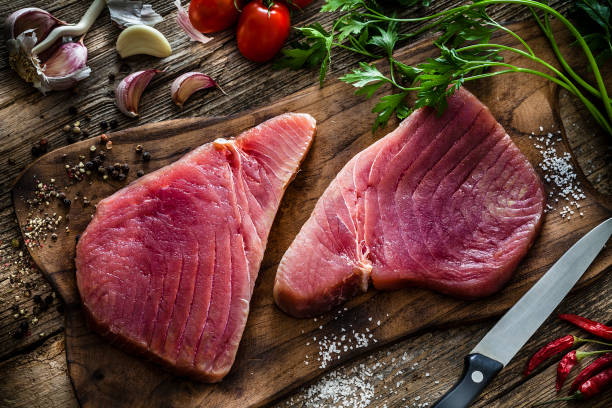In terms of sustainability and fishing methods, the popular edible fish is increasingly being criticized. The MSC has now released a report on global tuna fisheries. We present the results to you.
Whether as a delicious salad topping, sophisticated sushi filling, or crispy fried: tuna is not only versatile in preparation but also unique in taste. So it is not surprising that tuna now ranks fourth among the most popular food fish in Germany, with a market share of 15 percent.
Fish consumption has also increased globally, with global tuna catches having increased twelvefold since 1959. In terms of sustainability, new questions are now coming to the fore with the increased consumption of the protein-rich edible fish: What is the status of global tuna stocks? How sustainable is the tuna supply? Should we give up tuna for the sake of the environment?

That’s the situation with tuna stocks
Tuna is now increasingly associated not only with delicious recipes but also with the issue of overfishing, as a recent opinion poll by INSA Consulere shows. However, it is important to differentiate between the individual tuna species when it comes to overfishing.
There are a total of seven major tuna species, each of which is divided into several stocks – the conditions vary depending on the species and stock. While all stocks of skipjack tuna are considered healthy and not overfished, the situation for yellowfin tuna is different. This species of tuna is considered overexploited in the Indian Ocean stocks.
Whether it’s fresh, frozen, or canned, as tuna consumption increases, so does the pressure on tuna stocks and their habitat. Overall, out of 23 tuna stocks worldwide, 15 are currently in good condition and 3 are considered overfished. But this situation is fragile because there are still no clear rules on fishing. Therefore, pay attention to the type of tuna and the respective origin when you buy it.
Tuna supply and sustainability
When it comes to sustainability, the German retail sector in particular has a lot of catching up to do. A market analysis commissioned by the MSC found that 90 percent of the tuna sold in Germany comes from non-controlled and traceable fisheries. Thus, no statements can be made about the catches of these fisheries, possible bycatch, or appropriate stock size.
Stefanie Kirstie, head of the MSC Germany/Austria/Switzerland, therefore calls for independent labeling of the origin, fishing methods, and sustainability of the tuna sold in retail. Because “sustainability needs transparency, traceability, and independent controls!” says Kirstie.

71 percent of the tuna consumed in Germany comes from a can. Especially with particularly cheap canned tuna, the sustainability deficit is enormous. As a result, the MSC calls in its tuna report to exclude special offers and rock-bottom prices for tuna products.
